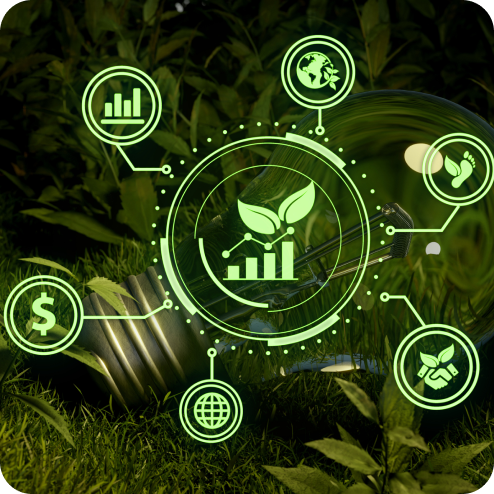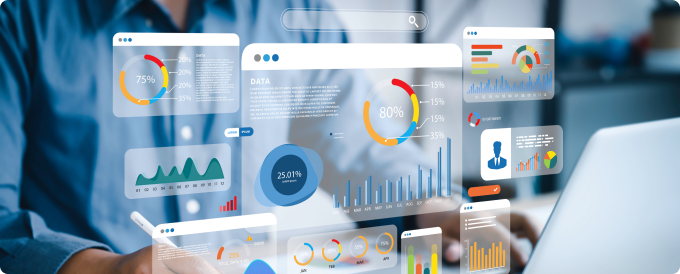The Complete Guide to the Life Cycle of a Private Equity Fund in 2025


Published on:
PE Life Cycle
The PE fund lifecycle, a structured 10-12 year journey, is essential for all stakeholders to understand for optimal returns. Understand what is a private equity fund, and how AI platforms like Kairos by Brownloop are now modernizing this process, using data-driven insights to streamline workflows, enhance efficiency, and drive superior performance.
- Introduction
- What is a Private Equity Fund?
- Why the Private Equity Fund Life Cycle Matters and to Whom
- The Six Phases of a Private Equity Fund Life Cycle
- Challenges in the Private Equity Fund Life Cycle and How Technology Helps
- What Businesses and Limited Partners Must Consider at Each Stage
- Emerging Trends in PE Fund Life Cycles (2025 Trends)
- Conclusion
- Frequently Asked Questions
Introduction
The private equity fund lifecycle governs the flow of capital and the generation of returns. Outlining the key stages of a fund’s journey provides structure and clarity on how it operates, making it pivotal for general partners, limited partners, and business owners. As the industry evolves, AI-driven platforms like Kairos by Brownloop are revolutionizing each phase by streamlining operations and enabling more data-driven decisions for efficient fund management.
In this guide, we will explore each phase of the fund lifecycle, examining key decisions, emerging trends, and actionable insights.
What is a Private Equity Fund?
A private equity fund is a pooled investment vehicle managed by general partners (GPs) and funded by limited partners (LPs) and high-net-worth individuals. They typically target private companies or public companies that are taken private through leveraged buyouts (LBOs), and usually span 10 to 12 years, during which capital is raised, invested, and ultimately returned to LPs.
A PE fund’s timeline goal is to generate substantial returns through active management, cost-cutting, and market expansion. Operating under a specific investment thesis, the fund targets certain sectors, stages, and geographies. A strong governance model ensures disciplined decision-making, alignment between GPs and LPs, and transparent reporting throughout the private equity fund life cycle’s stages.
In recent years, AI and tools for data analytics in private equity have become crucial, as they help funds analyze large datasets, predict market trends, and automate portfolio management, ultimately enhancing the ability to drive value and achieve superior returns.
Why the Private Equity Fund Life Cycle Matters and to Whom
Benefits for Business Owners
For business owners, the PE fund lifecycle provides clarity on the LP’s goals and timelines, offering the resources needed to scale operations. It gives owners visibility into future exits, helping them plan for growth. This partnership also aligns incentives between both parties for long-term success.
Benefits for Limited Partners
For LPs, the private equity fund lifecycle ensures predictable cash flow timelines by clarifying capital calls and distributions. It provides insights into fund pacing, deployment, and performance, enabling better portfolio planning. This understanding allows LPs to track value creation initiatives, which is crucial for making informed decisions on future investments and re-upping into new funds.
Benefits for General Partners
Key Goals at Each Stage
Each stage of a private equity fund’s lifecycle has distinct goals, measured by KPIs like EBITDA growth, IRR, and MOIC. During fundraising, the goal is to secure commitments. In the private equity investment period, AI tools help find high-potential deals. Value creation focuses on improving operational metrics, while exits aim to maximize returns. Finally, distribution ensures fair profit allocation. Private equity automation trends show how technology now enhances efficiency and decision-making at every stage, from finding deals to profit distribution.
Common Misconceptions About Private Equity Fund Cycles
Some common misconceptions about the private equity fund lifecycle include the belief that all funds last exactly 10 years, when many actually include extensions. Another myth is that returns are only generated at exit, but value can also be realized earlier through dividends or recapitalizations. Finally, while GPs are in control, market forces, LP constraints, and operational realities significantly influence a fund’s success.
The Six Phases of a Private Equity Fund Life Cycle
Phase 1 – Fundraising

Defining Fund Strategy
The first step is to identify target sectors, geographies, and deal size based on market research and LP interest. The fund strategy must clearly articulate value creation levers and the competitive edge that differentiates the fund. The fund design should align with the macroeconomic outlook and LP appetite for both the fund’s goals and expectations are to be met.
Legal Structuring and Partnerships
Fundraising requires careful legal structuring. Legal entities are created, and partnership terms are defined in the Limited Partnership Agreement (LPA), which outlines fees, governance, and reporting rights. Additionally, funds must also ensure compliance with securities regulations across various jurisdictions.
Capital Commitments and Closing Rounds
Phase 2 – Investment Period

Sourcing and Evaluating Opportunities
Deal sourcing leverages relationships with bankers, proprietary channels, and platforms like Kairos by Brownloop during this period. Deals are screened based on investment thesis fit to ensure alignment with the fund’s strategy. CIMs, teasers, and market intelligence help prioritize the most promising leads.
Due Diligence and Deal Structuring
Phase 3 – Portfolio Management and Value Creation

Driving Value Creation Levers
Operational Oversight and Monitoring
KPIs are set and tracked to monitor EBITDA CAGR against projections. GPs actively participate in board governance to align with strategic goals. Kairos by Brownloop helps monitor progress through dashboards for data-driven decision-making.
Reporting to Stakeholders
GPs deliver quarterly reports that adhere to ILPA standards to provide updates on performance, risks, and opportunities. Maintaining transparency around value creation ensures Limited partners are informed about progress and any deviations from the original plan.
Phase 4 – Exit Strategies

Timing Exits for Maximum ROI
Market conditions, buyer appetite, and portfolio company readiness must be monitored to time exits optimally. Predictive models evaluate exit windows, and managers must decide between partial vs. full exits and consider secondary sales when appropriate.
Types of Exits
There are several private equity exit strategies: a strategic sale to a corporate buyer, a secondary sale to another PE firm, or an IPO or SPAC. Dividend recapitalization provides a partial liquidity event before a full exit.
Phase 5 – Distribution of Returns

Profit Allocation Between LPs and GPs
Carried Interest and Hurdle Rates
Carried interest is earned by GPs after the hurdle rate (typically 8%) is cleared. This mechanism aligns GP incentives with fund performance, but it is subject to clawback provisions in case future losses occur or benchmarks are not met.
Phase 6 – Fund Wind-Down

Orderly Closure of Remaining Investments
This phase involves the orderly closure of remaining investments and includes asset sales, write-downs, or secondary fund sales. Outstanding obligations are resolved, and legal entities are wrapped up in compliance with fund terms.
Extension Mechanisms
Challenges in the Private Equity Fund Life Cycle and How Technology Helps
Fundraising Challenges
Challenge: Lengthy LP Outreach, Transparency Issues
Fundraising often involves lengthy outreach to potential LPs, and managing communication can become cumbersome. Additionally, maintaining transparency throughout the process is challenging for both GPs and LPs.
Tech Solution: Digital Fundraising Platforms, Data Rooms, LP CRM
Technology solutions, such as digital fundraising platforms and data rooms, provide centralized spaces for communication and document sharing. LP CRMs offer real-time tracking of their interests, helping GPs engage more efficiently with potential LPs.
Investment Period Challenges
Challenge: High competition for deals, slower execution
Competition is fierce, and executing deals quickly can be challenging due to the volume of due diligence and structuring required, which often slows the process.
Tech Solution: AI-driven sourcing, automated due diligence, predictive analytics for portfolio management
Kairos by Brownloop is an AI-driven platform that accelerates deal execution by automating initial screenings, analyzing CIMs, and flagging high-potential opportunities. Its predictive analytics also anticipate risks and returns, helping you move more confidently.
Harvesting Returns Challenges
Challenge: Timing exits, market volatility, distribution transparency
Timing exits effectively can be tricky, especially with market volatility and fluctuating buyer demand. Additionally, maintaining distribution transparency is critical but often difficult.
Tech Solution: AI-powered exit timing models, blockchain for transparent distributions
AI predicts optimal exit timing by analyzing market signals and portfolio performance. Meanwhile, blockchain technology ensures transparent, secure distribution of funds, giving LPs visibility into their share of the returns.
What Businesses and Limited Partners Must Consider at Each Stage
Tips for Founders/Owners
Business owners should understand the investment horizon and value-creation expectations set by their PE partners. To align operational goals with the fund’s investment thesis, owners should focus on improving KPIs, identifying areas for growth, and supporting the fund’s strategy. It’s also critical to plan for an exit early to be well-positioned for a smooth liquidity event. Clear and transparent communication with the general partners will help address challenges and ensure strategic alignment.
Tips for Limited Partners
LPs must evaluate the general partners’ track record, looking for consistent returns across multiple cycles. Tracking capital deployment, monitoring exit timelines, and assessing performance against targets ensures the fund is on track for long-term value creation. AI-powered insights help limited partners anticipate market trends, evaluate investment performance, and refine exit strategies to maximize returns.
Emerging Trends in PE Fund Life Cycles (2025 Trends)

Fund Duration Extensions
Fund duration extensions are becoming increasingly common as funds are required to hold investments for longer periods. Funds with illiquid assets or complex portfolio companies use continuation vehicles to extend their lifespan for more time to realize value and execute strategic growth or operational improvements before an exit.



ESG and Impact Investing
ESG (Environmental, Social, Governance) and impact investing have become vital. Limited partners demand that funds prioritize sustainability and social responsibility. Funds now track ESG metrics and automate reporting through tech, helping them align with LP expectations and stay competitive while managing risks in a more regulated environment.

Tech-driven Diligence and Reporting
Diligence tools like Kairos by Brownloop are the key to private equity automation in deal sourcing and fund reporting. They automate data extraction, enhance risk modeling, and aggregate market intelligence for quicker, smarter decisions, while also providing real-time performance updates to help managers track value creation and optimize exit timing more effectively.



Globalization and Specialized Funds
PE firms are focusing on sector-specific and geography-focused funds to target emerging markets and niche sectors. Specializing in these areas allows funds to tap into regional opportunities and better align with LPs’ preferences. It also provides more focused expertise, enhancing deal sourcing and value creation while diversifying global exposure.
Conclusion
The importance of the private equity fund life cycle is that of a dynamic framework guiding funds through fundraising, investment, value creation, exits, and wind-down. Mastering each phase ensures optimized capital deployment, maximized returns, and effective risk management. Platforms like Kairos by Brownloop, which leverage functions like AI in due diligence, revolutionize decision-making and operational efficiency so that PE firms can navigate this cycle with greater precision and speed. Embracing these innovations will not only reshape the future of private equity but also give firms a competitive edge in 2025 and beyond.
Frequently Asked Questions
 What is the average life cycle of a private equity fund
What is the average life cycle of a private equity fund
The typical life cycle is 10 to 12 years, with a 5-6 year investment period, followed by value creation and exits. Extensions are possible, usually for 1-2 years.
 Can a PE fund extend past its planned cycle?
Can a PE fund extend past its planned cycle?
Yes, funds can extend with LP approval, often to allow more time for value creation or to manage illiquid assets before a strategic exit.
 How is the PE fund performance reported?
How is the PE fund performance reported?
Performance is reported quarterly using key metrics like IRR (Internal Rate of Return), MOIC (Multiple on Invested Capital), and DPI (Distributions to Paid-In).
 What happens if a private equity fund can’t exit all investments by the end of its term?
What happens if a private equity fund can’t exit all investments by the end of its term?
Remaining assets may be transferred to a continuation fund or sold to secondary buyers to ensure an orderly wind-down.
 What is the 80-20 rule in private equity?
What is the 80-20 rule in private equity?
The 80-20 rule dictates profit distribution: 80% goes to LPs and 20% to GPs as carried interest after a predefined return hurdle is met.
Discover how AI-driven insights can transform your investment strategies and boost returns.





